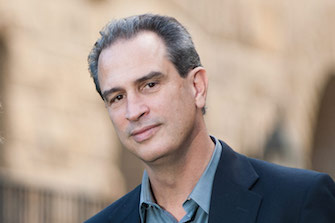FTC report has no harsh words for patent trolls
 On October 6th, Fortune published an article discussing the recent patent assertion entity (PAE) study released by the Federal Trade Commission (FTC). The title of the Fortune article reads, “The FTC Patent Report Has Some Harsh Words for Patent Trolls.”
On October 6th, Fortune published an article discussing the recent patent assertion entity (PAE) study released by the Federal Trade Commission (FTC). The title of the Fortune article reads, “The FTC Patent Report Has Some Harsh Words for Patent Trolls.”
Interestingly, however, the FTC did not have harsh words for patent trolls. In fact, the FTC report specifically explained that using the term “patent troll” is unhelpful. Early on in Chapter One of the report, it reads: “In the Commission’s view, a label like ‘patent troll’ is unhelpful because it invites pre-judgment about the societal impact of patent assertion activity without an understand of the underlying business model that fuels such activity.”
What the FTC’s report did address was several interesting issues posed by what is referred to as “nuisance litigation,” or in the view of the FTC, litigation that leads to licenses less than $300,000. The FTC chose $300,000 as the threshold because it is the lower bound for early-stage litigation costs. But what does the cost of litigation defense have to do with whether an assertion of patent rights is merely for nuisance value?
“The $300,000 line in the sand gets back to a point I’ve spoken on before,” explained Jaime Siegel, CEO of Cerebral Assets and Global Director of Licensing for the Open Invention Network (OIN). “Built into the system is a mismatch in valuation. Not every patent license is worth $1 million. I’m aware of patents that were valued at a $25,000 license, which was set not to be a nuisance, but rather because the alternative was a $50,000 work around, so the appropriate price was less than that amount. A patent license should be based on how much value is in the license, and it isn’t always $1 million.”
“$300,000 is a completely arbitrary number that attempts to put patent licenses into buckets and suggests that if it is $300,000 and below it must be a sham claim, and that generalization is absolutely untrue,” Siegel explained. “What makes a nuisance claim a nuisance claim is when a patent is not infringed or is almost certainly invalid; that is what makes a case a nuisance settlement. When a patent owner says we know we have a lousy patent, but we know the defendant will pay us X dollars because it costs so much to litigate, that is what makes a nuisance case.”
Of course, Fortune did not explore the merits of the FTC report, which is odd given it has long been regarded as one of the preeminent business publications. Instead, the Fortune article continues to force a ‘patent troll’ narrative on false pretenses. Indeed, the article obviously leaves out important facts and maybe gets other facts wrong, and seems to wrongly conflate PAEs with non-practicing entities (NPEs). Whereas a PAE is an entity that obtains patents to license or enforce them on other parties already practicing the technology, the FTC report defines NPEs separately as “patent owners that primarily seek to develop and transfer technology.” Technology transfer is a different business model than patent assertion, and something Fortune should be well aware of, but somehow seems to have missed.
That is improperly reporting what was said in this very important FTC report that will undoubtedly be used come January 2017 by those seeking further patent reform. But given the rather obvious errors in this article and Fortune’s past history of siding with the infringer lobby, legitimate questions can and should be raised.
FTC finally releases long-awaited report on PAEs
 On September 27th, 2013, the Federal Trade Commission (FTC) announced that it had voted to collect public comments and gather information on 25 companies known as patent assertion entities (PAEs). The study was intended to shed more light on the PAE business model and create a better understanding of how their patent litigation activities affect innovation and competition in the U.S. economy. As defined by the FTC, PAEs are companies that do not produce, manufacture or sell goods but rather acquire patents from third parties which the PAE monetizes through negotiating licenses or litigating against an alleged infringer.
On September 27th, 2013, the Federal Trade Commission (FTC) announced that it had voted to collect public comments and gather information on 25 companies known as patent assertion entities (PAEs). The study was intended to shed more light on the PAE business model and create a better understanding of how their patent litigation activities affect innovation and competition in the U.S. economy. As defined by the FTC, PAEs are companies that do not produce, manufacture or sell goods but rather acquire patents from third parties which the PAE monetizes through negotiating licenses or litigating against an alleged infringer.
On October 6th, 2016, the FTC released the long-awaited findings of this report, titled Patent Assertion Entity Activity: An FTC Study, which includes analysis of 22 PAE respondents and more than 2,500 affiliates and related entities, conducted between January 2009 and mid-September 2014. The report’s findings and recommendations for legislative and judicial reform were intended to “balance the needs of patent holders with the goal of reducing nuisance litigation,” according to a quote attributed to FTC Chairwoman Edith Ramirez in the FTC’s official press release. Specifically, the FTC had concerns about the ex post nature of PAE patent transactions, in which licenses or settlements occur after a target has already developed a technology for marketing.
10.24.16 | Federal Trade Commission, Patent Issues, Patent Trolls | Gene Quinn
The intermediary role of patent assertion entities
 Back in December 2014, at Michelle Lee’s first confirmation hearing before the Senate Judiciary Committee, Senator Mazie Hirono (D-HI) succinctly pointed out that “one person’s patent troll is another person trying to protect his or her patent.” Thus, as like so many issues in the law, the questions surrounding the so-called patent troll debate are not nearly as straightforward as you may have otherwise been lead to believe.
Back in December 2014, at Michelle Lee’s first confirmation hearing before the Senate Judiciary Committee, Senator Mazie Hirono (D-HI) succinctly pointed out that “one person’s patent troll is another person trying to protect his or her patent.” Thus, as like so many issues in the law, the questions surrounding the so-called patent troll debate are not nearly as straightforward as you may have otherwise been lead to believe.
In order to bring some empirical rigor to the debate, Stephen Haber, a political scientist from Stanford University, recently published the results of a study he completed that explains exactly why so-called patent trolls play a vital role in the innovation ecosystem. He explains that patent assertion entities, who are the ones most often labeled as patent trolls, play a vital role as an intermediary. Essentially, Haber explained to me that when an intermediary ceases to provide value, the intermediary ceases to exist. Thus, the very fact that an intermediary does exist in the marketplace suggests some valuable role.
04.1.15 | Patent Issues, Patent Litigation, Patent Trolls, posts | Gene Quinn
FTC Stops Deceptive Patent Demand Letters
 In a move reminiscent of the action taken earlier this year by NY Attorney General Eric T. Schneiderman, the Federal Trade Commission last week announced that MPHJ Technology Investments, LLC, agreed to settle Federal Trade Commission charges that they used deceptive sales claims and phony legal threats in letters that accused thousands of small businesses around the United States of patent infringement. As is typical for FTC settlements, the proposed consent order was published in the Federal Register and public comments have been solicited. The proposed consent order will be subject to public comment for 30 days, continuing through December 8, 2014, after which the Commission will decide whether to make the proposed consent order final. Interested parties can submit written comments electronically or in paper form. Although the FTC will accept these comments, in my experience, when an enforcement settlement has gotten to this stage, we can expect the proposed settlement to become final.
In a move reminiscent of the action taken earlier this year by NY Attorney General Eric T. Schneiderman, the Federal Trade Commission last week announced that MPHJ Technology Investments, LLC, agreed to settle Federal Trade Commission charges that they used deceptive sales claims and phony legal threats in letters that accused thousands of small businesses around the United States of patent infringement. As is typical for FTC settlements, the proposed consent order was published in the Federal Register and public comments have been solicited. The proposed consent order will be subject to public comment for 30 days, continuing through December 8, 2014, after which the Commission will decide whether to make the proposed consent order final. Interested parties can submit written comments electronically or in paper form. Although the FTC will accept these comments, in my experience, when an enforcement settlement has gotten to this stage, we can expect the proposed settlement to become final.
The settlement with MPHJ is the first time the FTC has taken action using its consumer protection authority against a patent assertion entity (PAE). Perhaps most significantly, in the announcement of the settlement, the FTC acknowledged that patents promote innovation, which is a simple enough truth. Still given recent FTC inquiry into the industry, this statement from the Obama Administration could signal that the FTC will take actions only against outliers and not the bulk of the industry, which operates legitimately to enforce valid patents.
11.12.14 | Patent Issues, Patent Licensing, Patent Trolls, posts | Gene Quinn


No Comments
10.26.16 | Federal Trade Commission, Patent Issues, Patent Trolls | Gene Quinn